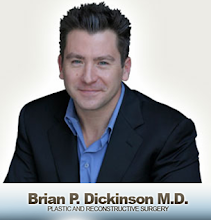
The
breast augmentation consultation can often bring anxiety to the patient as there are many questions to be addressed or discussed. These variables can range from topics pertaining to the patient (medical conditions, height & weight, bra size, pre-operative breast shape); surgeon (preference for above vs. below the muscle, incision choice); or implant (saline vs. silicone, smooth vs. textured, profile).
Determining bra size in
breast procedure consultations creates a common frame of reference for the physician and patient to discuss post operative bra size. The first step in the physical examination is observation. In the observation step, both the patient and I stand in front of the mirror and with the same perspective identify any asymmetries between the breasts.
Breasts are more often than not asymmetric with either a discrepancy in breast volume, breast fold position, nipple position, shoulder height, and chest wall asymmetry. After this step of the physical examination we proceed to pre-operative
bra sizing.
Bra Sizing: The Basics
The size of a bra is determined by two factors: 1) The Band Size & 2) The Cup Size.
1) The Band Size
Step 1. The band size of the bra is relatively a fixed number determined by the circumference of a woman’s chest. This number can be measured with a measuring tape in inches, just beneath the
breasts, in the crease where the band of the bra would be placed.
Step 2. Add five to the number of inches determined from this measurement. For example, if the measured number is 27” then if you add the number 5, the result is 32. Therefore the band size of the bra necessary is 32. If the measured number were 28” adding 5 would result in a 33 band. One quickly realizes when bra shopping that there are no odd number band sizes, so one would try on a 32 or 34 band bra to see which fit best. In this scenario, the 32 bra would be worn on the last of three clasps and a 34 bra would be worn on the first of three clasps.
The band size is relatively consistent in women of adult age as the bony ribcage has completed growing. This number will change to a small degree if a woman gains or looses weight around the chest where the band of the bra would normally be placed. The so called “bra fat”.
2) The Cup Size
I have found the “Size Me Up” system designed by Edward Pechter in Valencia, CA to be the best system for determining cup size. In the “Size Me Up” system, the dome of the breast is measured by starting the measurement from where the
breast begins on the side of the chest, passing over the nipple and finishing towards the sternum where the breast ends. The resulting measurement is then compared on the “Size Me Up” chart to determine the cup and bra size.
One point I have learned is that the “cup volume” or “measured breast dome” increases depending upon the band width. That is, a “C” cup represents a smaller volume
breast for a woman with a small ribcage (i.e.32 band size bra, C-cup) than a woman with a larger ribcage (i.e. 36 band size bra, C-cup).
In my experience, the best manner in which to predict the post-operative cup size is to determine the pre-operative bra size measurements and base diameter of the patient. The post-operative cup size can be predicted by using these measurements with the volume per base diameter of the
breast implant.
While the prediction of post-operative cup size is not exact, I find this step to be helpful, as it facilitates a common frame of reference between the patient and surgeon.
Photograph:
Revision breast augmentation.
Bilateral Capsulectomy, Conversion of total submuscular saline
breast augmentation to dual plane silicone
breast augmentation.

















